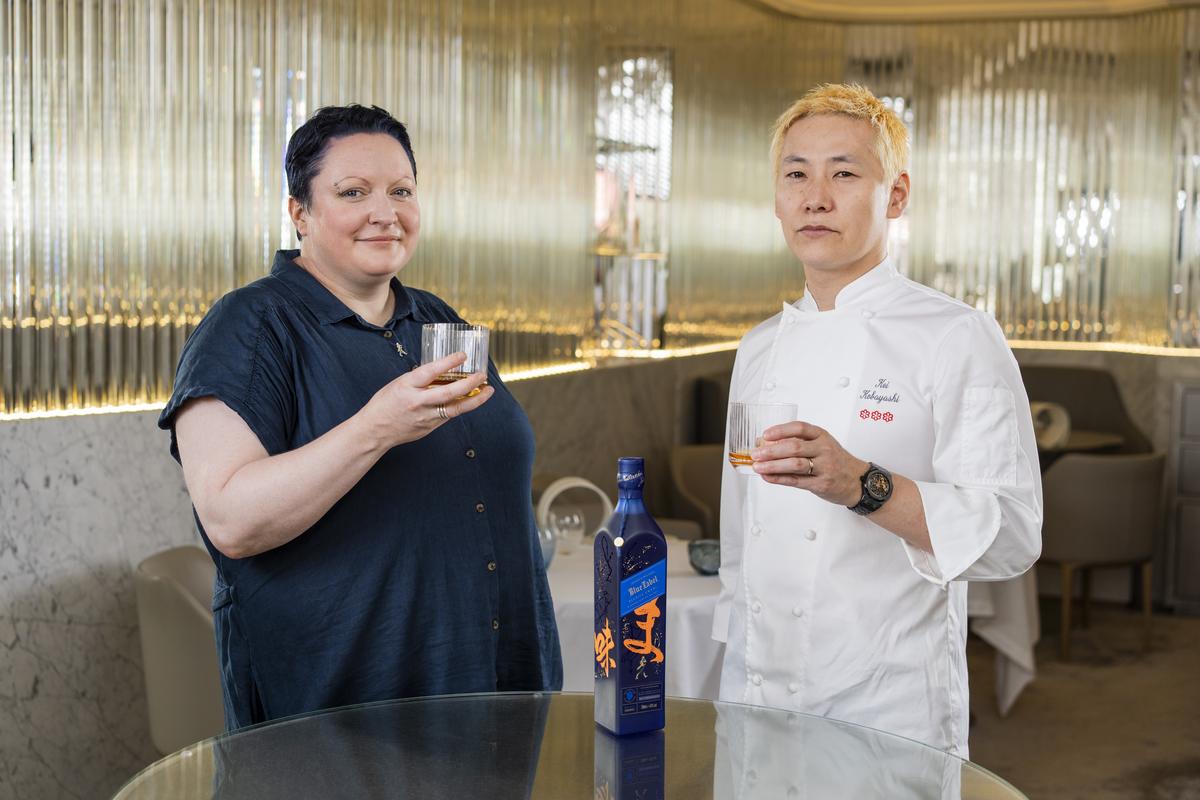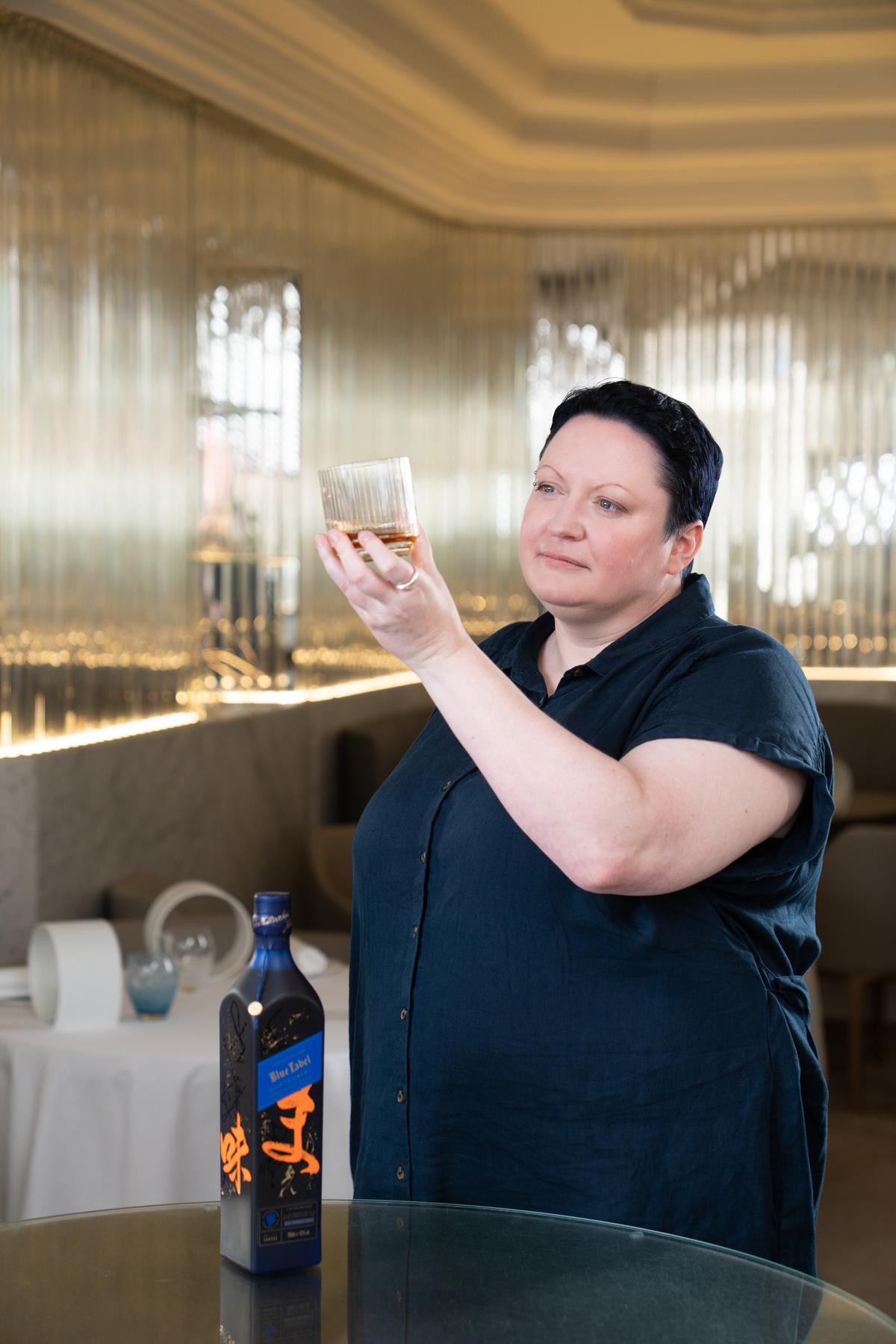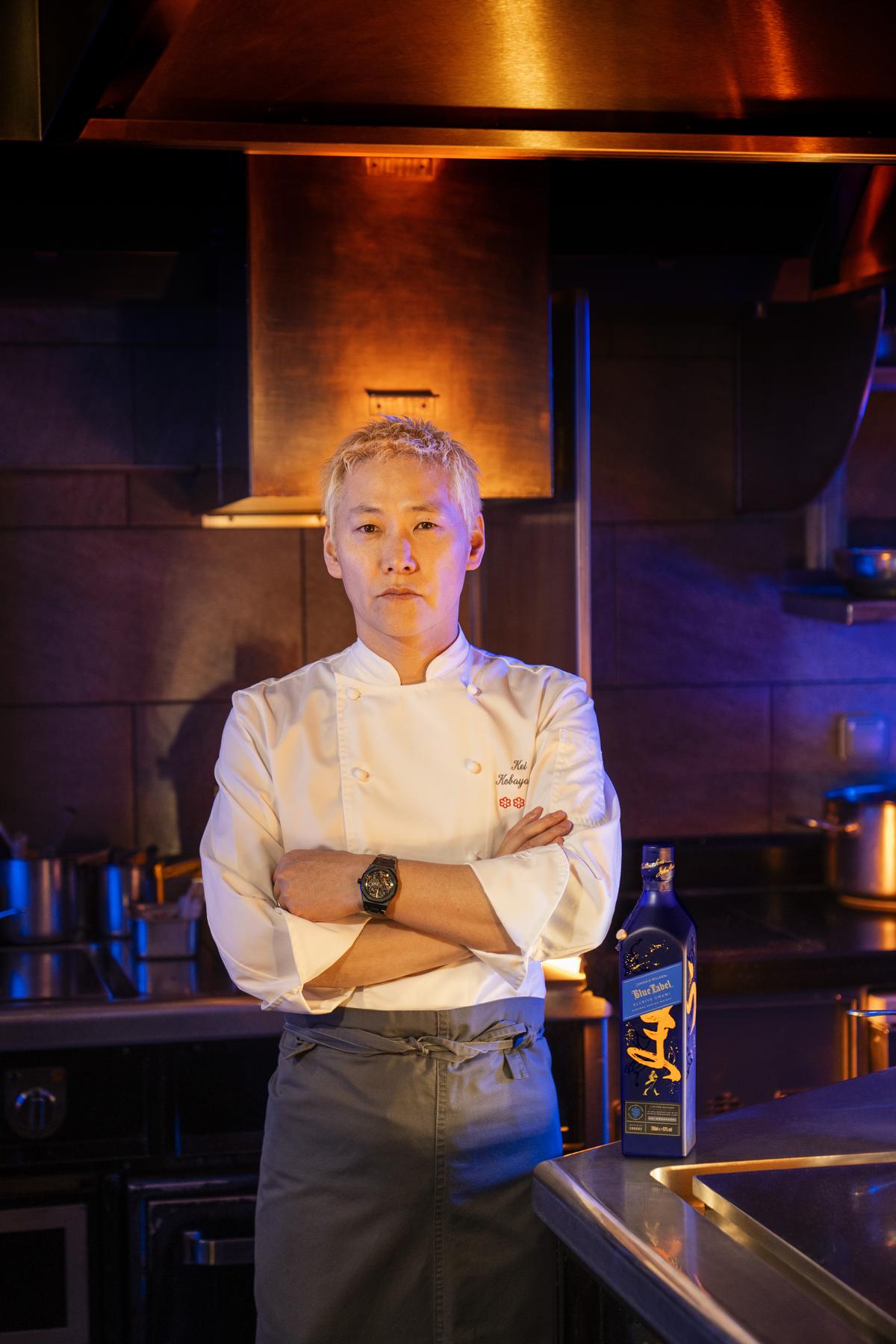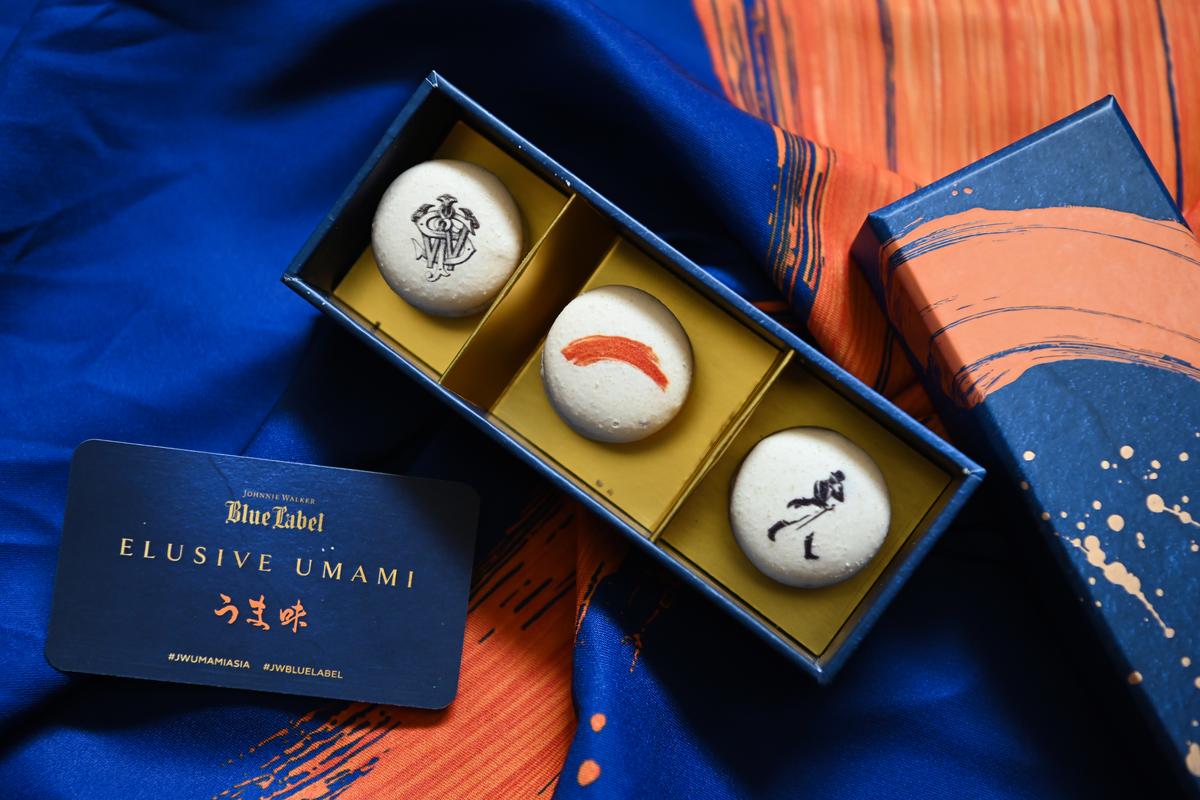
[ad_1]

Johnnie Walker Blue Label Elusive Umami with a dollop of caviar
| Photo Credit: Special arrangement
To be honest, Johnnie Walker Blue Label Elusive Umami is best savoured neat. After a dollop of caviar.
Launched last weekend at the Taj Mahal Palace, Mumbai, the Scotch, which has been curated by the brand’s first female master blender Emma Walker and Chef Kei Kobayashi, features delicate but unmistakable savoury notes.

Master blender Emma Walker and Chef Kei Kobayashi
| Photo Credit:
Special arrangement
Talking about the idea of finding umami in whisky, Emma explains, “Chef Kei and I met in June 2022 at chef’s restaurant — Restaurant Kei — in Paris. The initial challenge was to bring together our expertise in whisky making and creative gastronomy. We handpicked whiskies like they were ingredients — from salty, smoky notes to savoury and meaty flavours. Sipping and nosing, we went back and forth making sure we knew the ingredients but leaving space for recommendations and commentary based on our expertise.”

Emma examines the Johnnie Walker Blue Label Elusive Umami
| Photo Credit:
Special arrangement
Select casks from inland and coastal distilleries were handpicked for their unique umami profile. The whisky at 43% ABV (amount of alcohol per volume of the spirit) is a juxtaposition of sweet and savoury on the nose, with hints of fresh green apples balancing salt brine.
At the launch, Ruchira Jaitly, chief marketing officer, Diageo India, says the spirit speaks to a new Scotch audience, “Earlier there was more conservative, closed enjoyment. Now it is more inclusive, accommodating, catering to a young, affluent and adventurous audience that wants to savour rare Scotch with friends, instead of saving it only for big occasions.”

Chef Kei Kobayashi
| Photo Credit:
Special arrangement
There are just 2,000 bottles of the umami-rich Scotch available in India (price on request). The spirit, “is luscious, with notes of apple and white peach first,“ says Emma. Notes of mandarins, blood oranges and red berries add a complexity, with a lingering finish of sweet wood spice, a touch of smoked meat, warming salt and pepper with a long, sweet fruit finish.
The master blender adds, “We worked to create a whisky that transported you to a forest at dawn, when the air of the night slowly transitions to the warmth of the day, reflecting chef Kei’s memories of walking amongst the stunning Japanese mountains in Nagano in the early morning. For the chef, cuisine is created from two things: earth and sea, and he thinks of Johnnie Walker Blue Label as an ocean of flavour.”

There are just 2,000 bottles of the umami-rich Scotch available in India
| Photo Credit:
Special arrangement
The event saw attendees taken on a journey of discovery through all five senses by Chef Dharshan Munidasa, Japanese Cuisíne Goodwill Ambassador, calibrating each course to accentuate the spirit. With courses themed Wind/Kaze, Earth/Tsuchi and Water/Mizu, layers of umami were presented in broths, mushroom and ramen, the dessert course featuring a Shibuya style French toast with a Johnnie Walker Blue Label Elusive Umami atomizer. “Certain condiments can pull out the umami, like salt makes watermelons sweeter, and carrots, tomato and cheese bring out stronger flavours that are hidden below the surface. Stocks from poultry, when added to crustaceans, extract umami from the shell-yielding notes of charcoal yet sweet, smoky and mellow,” states Dharshan.
What is umami?
In 1908, Japanese professor Kikunae Ikeda of Tokyo Imperial University (now the University of Tokyo) noticed the presence of a taste that did not fit into any of the sweet, salty, sour and bitter categories. The isolated crystals that conveyed the taste, were made of glutamate — one of the most common amino acids in foods, and in the human body. This unique taste was termed umami — “essence of deliciousness”. Following in Kikunae’s footsteps, other Japanese scientists discovered the umami substances inosinate and guanylate. Glutamate, now synonymous with MSG (monosodium glutamate) is found in meat, fish and vegetables like tomato. Inosinate is found in meat and fish, while guanylate is found in dried mushroom products such as dried shiitake.
[ad_2]
Source link